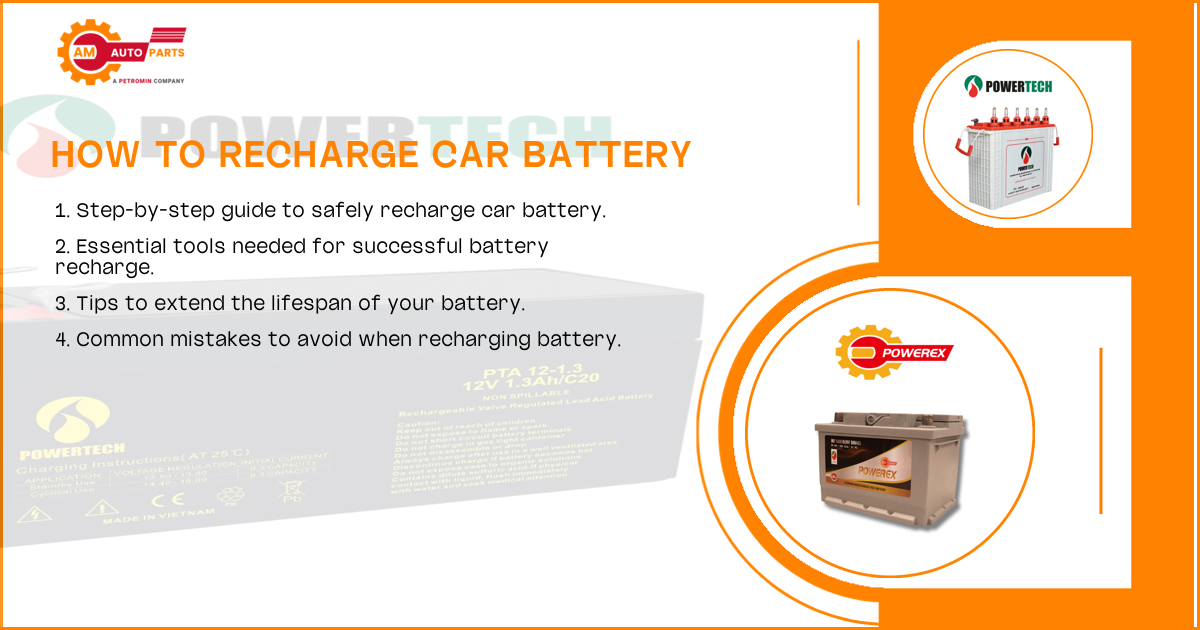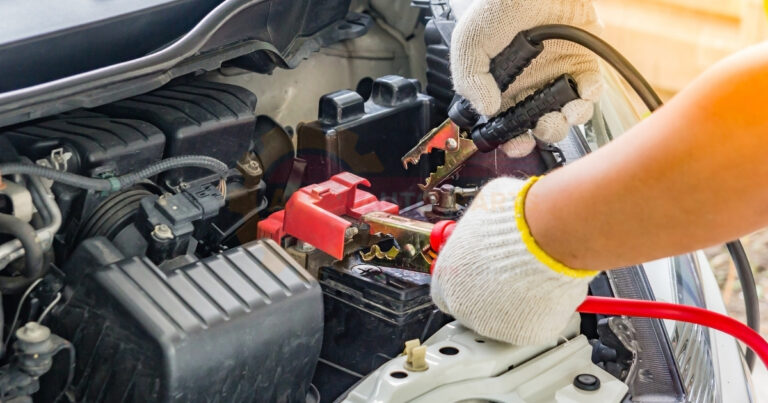Understanding Car Battery Recharging
What is a car battery and how does it work?
A car battery is a crucial component of your vehicle, providing the electrical power necessary to start the engine and run various electrical systems. It stores energy in chemical form and converts it into electrical energy when needed. The battery’s primary function is to supply power to the starter motor, ignition system, and other electronic components when the engine is off.
- Provides power to start the engine
- Supplies energy to electronic components
- Converts chemical energy to electrical energy
Types of car batteries and their recharging needs
Car batteries come in various types, each with specific recharging requirements. The most common types include lead-acid, AGM (Absorbent Glass Mat), and lithium-ion batteries. Lead-acid batteries are the most traditional and require regular maintenance, while AGM batteries are more efficient and have a longer lifespan. Lithium-ion batteries, often found in electric vehicles, require specialized charging equipment.
- Lead-acid: Traditional, requires maintenance
- AGM: More efficient, longer lifespan
- Lithium-ion: Specialized charging needed
Signs your car battery needs recharging
Recognizing the signs of a low battery can prevent unexpected breakdowns. Common indicators include dim headlights, slow engine crank, and a clicking sound when turning the ignition. If your battery is more than three years old, it might also be time for a recharge or replacement.
- Dim headlights
- Slow engine crank
- Clicking sound on ignition
Methods to Recharge a Car Battery
Using a battery charger
A battery charger is a reliable tool for recharging your car battery. It connects to the battery terminals and supplies a steady flow of electricity, restoring the battery’s charge. Ensure the charger is compatible with your battery type and follow the manufacturer’s instructions for safe use.
- Connects to battery terminals
- Supplies steady electricity flow
- Follow manufacturer’s instructions
Jump-starting with another vehicle
Jump-starting is a quick method to recharge a dead battery using another vehicle’s battery. You’ll need jumper cables and a willing helper. Connect the cables in the correct order to avoid damage, and once the engine starts, let it run to recharge the battery.
- Requires jumper cables
- Connect cables correctly
- Let engine run to recharge
Driving to recharge the battery
Driving your car can naturally recharge the battery, thanks to the alternator. A drive of at least 30 minutes at highway speeds can help restore the battery’s charge. This method is convenient but may not fully recharge a severely depleted battery.
- Utilizes alternator
- Drive for at least 30 minutes
- May not fully recharge depleted battery
Alternator’s role in battery recharging
The alternator is a key component in recharging your car battery while driving. It converts mechanical energy from the engine into electrical energy, which charges the battery and powers the vehicle’s electrical systems. A malfunctioning alternator can lead to battery drain.
- Converts mechanical to electrical energy
- Charges battery while driving
- Malfunction can cause battery drain
How Long Does It Take to Recharge a Car Battery?
Factors affecting recharge time
Several factors influence how long it takes to recharge a car battery. These include the battery’s capacity, the method of recharging, and the battery’s current charge level. Weather conditions and the age of the battery can also impact recharge time.
- Battery capacity
- Recharging method
- Current charge level
Recharge times for different methods
The time required to recharge a car battery varies by method. Using a battery charger can take anywhere from 4 to 24 hours, depending on the charger’s amperage. Jump-starting provides an immediate boost, but a full recharge requires driving or using a charger. Driving can recharge a battery in about 30 minutes to an hour, depending on the alternator’s efficiency.
Method | Time Required |
Battery Charger | 4 to 24 hours |
Jump-starting | Immediate, then drive |
Driving | 30 minutes to 1 hour |
Battery voltage chart and recharge levels
Understanding battery voltage can help determine recharge levels. A fully charged car battery typically reads around 12.6 volts. If the voltage drops below 12.4 volts, it’s time to recharge. Regularly checking the voltage can prevent unexpected battery failures.
- Fully charged: 12.6 volts
- Recharge needed: Below 12.4 volts
- Regular checks prevent failures
Car Battery Recharging While Driving
How driving recharges your battery
Driving recharges your car battery through the alternator, which generates electricity as the engine runs. This electricity is used to power the vehicle’s systems and recharge the battery. Regular driving helps maintain the battery’s charge and prolong its life.
- Alternator generates electricity
- Powers systems and recharges battery
- Regular driving maintains charge
Optimal driving conditions for recharging
For effective battery recharging, drive at highway speeds for at least 30 minutes. Avoid frequent short trips, as they may not provide enough time for the alternator to recharge the battery fully. Consistent long drives are ideal for maintaining battery health.
- Highway speeds for 30 minutes
- Avoid short trips
- Consistent long drives are ideal
Monitoring battery charge while driving
Keeping an eye on your battery’s charge while driving can prevent unexpected issues. Many modern vehicles have dashboard indicators that alert you to battery problems. Regularly checking these indicators and using a multimeter can help monitor the battery’s health.
- Dashboard indicators
- Use a multimeter
- Regular checks prevent issues
Maintaining Your Car Battery’s Charge
Regular battery maintenance tips
Regular maintenance can extend your car battery’s life. Clean the battery terminals to prevent corrosion, check the electrolyte levels if applicable, and ensure the battery is securely mounted. Regular inspections can catch potential issues early.
- Clean terminals
- Check electrolyte levels
- Securely mount battery
Using a battery maintainer
A battery maintainer is a device that keeps your battery charged at an optimal level. It’s especially useful for vehicles that are not driven frequently. By providing a low, steady charge, it prevents battery drain and extends battery life.
- Keeps battery optimally charged
- Useful for infrequently driven vehicles
- Prevents battery drain
Preventing battery drain
To prevent battery drain, turn off all lights and accessories when the engine is off. Regularly drive your vehicle to keep the battery charged, and disconnect the battery if the car will be unused for an extended period.
- Turn off lights and accessories
- Regularly drive vehicle
- Disconnect battery if unused
Troubleshooting Car Battery Recharging Issues
Common problems during recharging
Common issues during battery recharging include incorrect charger settings, faulty connections, and a malfunctioning alternator. These problems can prevent the battery from charging properly and may require professional assistance.
- Incorrect charger settings
- Faulty connections
- Malfunctioning alternator
When to seek professional help
If your battery fails to hold a charge despite recharging attempts, it may be time to seek professional help. A mechanic can diagnose underlying issues, such as a faulty alternator or damaged battery cells, and recommend appropriate solutions.
- Battery won’t hold charge
- Possible alternator issues
- Professional diagnosis needed
AM Autoparts battery testing services
AM Autoparts offers comprehensive battery testing services to diagnose and resolve battery issues. Their experts can assess your battery’s health and recommend whether recharging or replacement is necessary. Trust their expertise for reliable battery solutions. Battery powers vehicle Electric cars use big batteries to run instead of gas they can drive for many miles before needing to be recharged Automotive power duration refers to how long a vehicle can run on its power source It measures the time a car can operate before needing to refuel or recharge
Automotive electrical measurement helps check if car parts that use electricity are working right It uses special tools to test things like batteries wires and lights in vehicles Jumpstart dead battery is a quick way to get your car running again when the battery is out of power You can use special cables to connect your car’s dead battery to another car’s working battery to bring it back to life
Electrical system weakens when power lines get old or damaged This can cause lights to flicker and appliances to work poorly Battery selection guide Choose the right battery for your device by looking at size voltage and how long it lasts
Electric vehicle safety is about making sure electric cars are safe to drive and use These cars have special features to protect people from electrical problems and accidents Battery charging troubles can be frustrating when your device won’t power up Try different chargers or outlets to fix
- Comprehensive testing services
- Expert assessment
- Reliable solutions
Safety Precautions for Car Battery Recharging
Proper handling of car batteries
Handling car batteries requires caution to prevent accidents. Always wear protective gear, such as gloves and goggles, and avoid contact with battery acid. Ensure the battery is on a stable surface and follow safety guidelines during recharging.
- Wear protective gear
- Avoid battery acid contact
- Follow safety guidelines
Avoiding overcharging
Overcharging a car battery can lead to overheating and damage. Use a charger with an automatic shut-off feature to prevent overcharging. Regularly monitor the charging process to ensure the battery is not exposed to excessive voltage.
- Use automatic shut-off charger
- Monitor charging process
- Prevent excessive voltage exposure
Protective equipment for battery maintenance
When maintaining your car battery, use protective equipment to ensure safety. This includes gloves, goggles, and a face mask to protect against acid splashes and fumes. Proper equipment minimizes the risk of injury during maintenance.
- Gloves, goggles, face mask
- Protect against acid splashes
- Minimize injury risk
FAQ’s
Can you recharge a completely dead car battery?
Yes, you can recharge a completely dead car battery, but it may take longer than usual. Using a battery charger is the most effective method, as it provides a steady charge over time. However, if the battery is old or damaged, it might be better to replace it.
How often should I recharge my car battery?
The frequency of recharging depends on your driving habits and battery condition. Regular driving usually keeps the battery charged, but if your car sits unused for long periods, consider using a battery maintainer. Check the battery’s voltage regularly to determine if recharging is needed.
Is it better to replace or recharge an old car battery?
If a car battery is old and frequently loses charge, replacing it might be more cost-effective than repeatedly recharging. A new battery ensures reliability and optimal performance. However, if the battery is relatively new, recharging could be a viable option.






